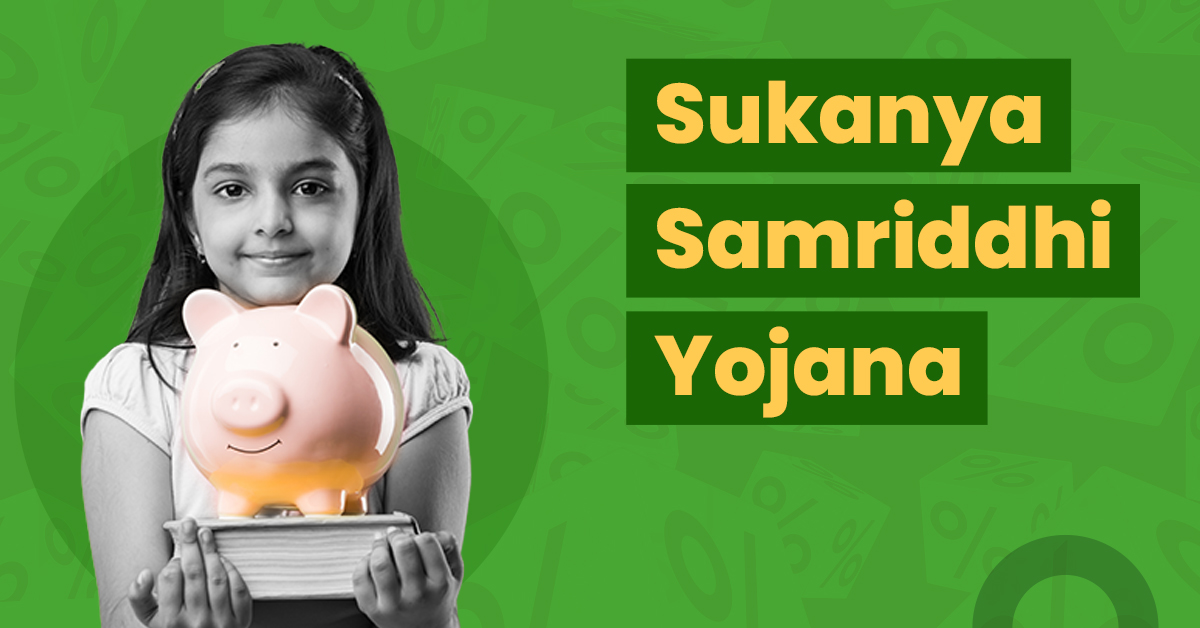Sukanya Samriddhi Yojana (SSY) Interest Rate 2023-24


Sukanya Samriddhi Yojana is a child welfare savings scheme introduced by the central government in 2014. It helps you create a corpus that your girl child can use in the future. The scheme comes with zero risk and has a maturity period of 21 years from the date of account opening.
The plan does not invest mobilised money in stock markets or other high-risk and volatile investment alternatives. Due to this, it efficiently delivers a fixed interest rate to its investors that is slightly higher than that on FDs.
In this article, you’ll know the interest rate of Sukanya Samriddhi Yojana (SSY) for the 2023-24 financial year. We have also mentioned the historical SSY interest rate from 2014 till now.
What is Sukanya Samriddhi Yojana (SSY)?
The Sukanya Samriddhi Yojana aims at solving the problems associated with a girl child’s education and marriage. The focus is to help parents build an investment corpus for their girl child’s education and carefree marriage expenses. A Sukanya Samriddhi Account is opened under SSY for this purpose.
Sukanya Samriddhi Yojana Interest Rate 2023-24
The Sukanya Samriddhi Yojana scheme does not invest your money in the stock market or other market-linked securities. Instead, the Sukanya Samriddhi interest rate is fixed by the government.
The Sukanya Samriddhi Yojana interest rate depends upon several criteria and may change from time to time. The current SSY interest rate is 8.2 % annually (as of Jan 2024).
The maturity period of the scheme is 21 years. So even if you stop investing after 15 years, the interest will continue to accrue until maturity.
Despite the conservative SSY interest rate, the scheme still has the potential to grow your money substantially, thanks to the power of compounding. For instance, if your investment of Rs.1 Lakh makes an interest of Rs. 8,200 at the end of the year, the compounded corpus of Rs.1.82 will earn interest after that. Now, imagine the wealth build-up over time. Sounds interesting? Let us now give you a walk-through of the Sukanya Samriddhi Yojana interest rate announced by the Government in the past few years.
Historical SSY Interest Rates (2014 Till Now)
As mentioned above, the Sukanya Samriddhi Yojana interest rates change from time to time. While the current interest rate is 8.2%, the scheme offered an interest rate of 9.1% in its initial phase.
Below are the SSY interest rates since it was introduced.
| Period | SSY Interest Rate |
| 1 April 2014 to 31 March 2015 | 9.1% |
| 1 April 2015 to 31 March 2016 | 9.2% |
| 1 July 2016 to 30 September 2016 | 8.6% |
| 1 October 2016 to 31 December 2016 | 8.5% |
| 1 January 2017 to 31 March 2017 | 8.5% |
| 1 July 2017 to 31 September 2017 | 8.3% |
| 1 October 2017 to 31 December 2017 | 8.3% |
| 1 January 2018 to 31 March 2018 | 8.1% |
| 1 April 2018 to 30 June 2018 | 8.1% |
| 1 July 2018 to 30 September 2018 | 8.1% |
| 1 October 2018 to 31 December 2018 | 8.5% |
| 1 January 2019 to 31 March 2019 | 8.5% |
| 1 April 2019 to 30 June 2019 | 8.5% |
| 1 January 2020 to 31 March 2020 | 8.4% |
| 1 April 2020 to 31 March 2023 | 7.6% |
| 1 April 2023 to 31 Dec 2023 | 8% |
| 1 Jan 2024 – present | 8.2% |
Also Read: Sukanya samriddhi yojana vs mutual fund
When is Sukanya Samriddhi Interest Rate Not Payable?
Once the scheme reaches its maturity or if the girl transitions to a Non-resident Indian (NRI) status or becomes a non-citizen, interest will no longer accrue. The government sets the interest rate, and it is reviewed and adjusted every quarter.
Sukanya Samriddhi Yojana Eligibility
Since it is a child welfare scheme, there are specific prerequisites you have to meet to be eligible. Below is a detailed list:
- One of the most significant prerequisites for the Sukanya Samriddhi Yojana eligibility is that it can only be opened for your girl child.
- You can sign up for the policy until your child turns 10. Beyond this age, the scheme cannot be put into action. There is no minimum age defined in the Sukanya Samriddhi Yojana eligibility criteria. You may start investing from the time of your child’s birth.
- You have to invest up to 15 years; however, the scheme will only mature after 21 years. Your deposits will end after 15 years, and the fund will continue to accrue interest.
- One girl child can only have one SSY account. If you have a second girl child, you must open another SSY account.
- A parent or legal guardian can open the account in their child’s name, and a family is eligible to open two accounts. A third account can only be opened in case of the birth of a twin, given there is enough documentation to prove the same.
Features of Sukanya Samriddhi Yojana
The features of Sukanya Samriddhi Yojana are as follows:
- You can open your Sukanya Samriddhi Account with a minimum of ₹250.
- Parents or legal guardians can open the account on behalf of their girl child.
- You can open a total of 2 accounts. In the case of twins, you can open up to 3 accounts.
- Sukanya Samriddhi Interest rates are as high as 8.2%.
- Deduction up to ₹ 1.5 lakhs can be availed under section 80C of the Income Tax Act.
- Deposits can be made through cash, cheques, and demand drafts.
Sukanya Samriddhi Yojana Tax Benefits
Now that you understand the Sukanya Samriddhi Yojana eligibility criteria, let us dive into the tax benefits you can enjoy. To begin with, the money you invest in an SSY scheme comes under section 80C of the Income Tax Act of India, 1961. Hence, you can claim tax benefits of up to Rs.1.5 Lakhs on your contributions to the scheme.
The maximum contribution allowed per year is Rs.1.5 Lakhs. If you don’t have any other 80C investments to claim a rebate for, you may use the whole Sukanya investment amount to file for tax exemptions.
The profit that your scheme generates is also exempt from tax. Furthermore, withdrawing the entire corpus at maturity also attracts no tax. This makes the Sukanya Samriddhi scheme highly beneficial to you.
Final Thoughts
Sukanya Samriddhi Yojana is a scheme with a multitude of benefits. From being one of the best schemes available for your girl child to providing many tax benefits, it has few matches. Moreover, since it comes with a fixed interest rate, you can enjoy guaranteed results, thus securing your child’s financial future.
Frequently Asked Questions
Is Sukanya Samriddhi Yojana interest calculated monthly?
The Sukanya Yojana interest rate is represented on a per-annum basis. But the interest is calculated monthly. The lowest SSY account balance in a month is considered for interest calculation; for instance, say your account balance on 1st May is Rs. 1 Lakh, and you deposit more on 5th May. In this case, the account balance on the 1st of the month (Rs. 1 Lakh) is considered for interest calculation.
For how many years can you deposit in Sukanya Samriddhi Account?
The maturity period of the Sukanya Samriddhi scheme is 21 years. The account remains active and accrues interest during this period. However, you can stop investing in the plan after 15 years of account opening. The choice here could be based on the corpus you aim to build for your child.
Can you withdraw prematurely from the Sukanya Samriddhi account?
You can withdraw prematurely for two reasons – either for the child’s education or marriage. There is a 50% cap on the withdrawal amount, meaning you can only withdraw half the amount accumulated before maturity.
Is Sukanya Samriddhi Yojana tax-free?
Your profit (including compounded gains) and the entire corpus are tax-free. Furthermore, you can claim a tax exemption for your investment in the scheme.
Can you close the Sukanya account?
Foreclosure is allowed in the Sukanya account under certain circumstances. Firstly, the child must be above 18, and she has to be married. If you meet the requirements, you may contact your home branch.







